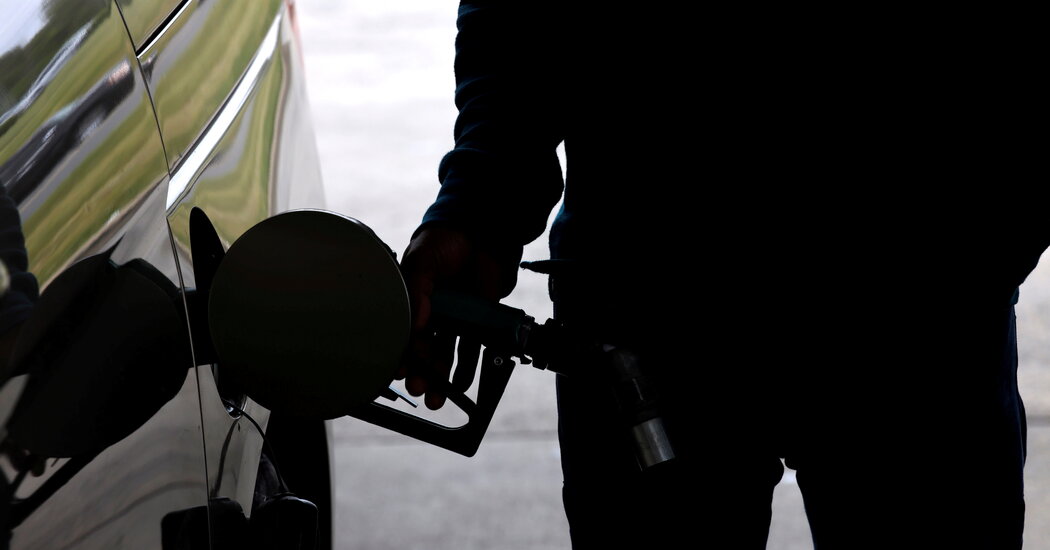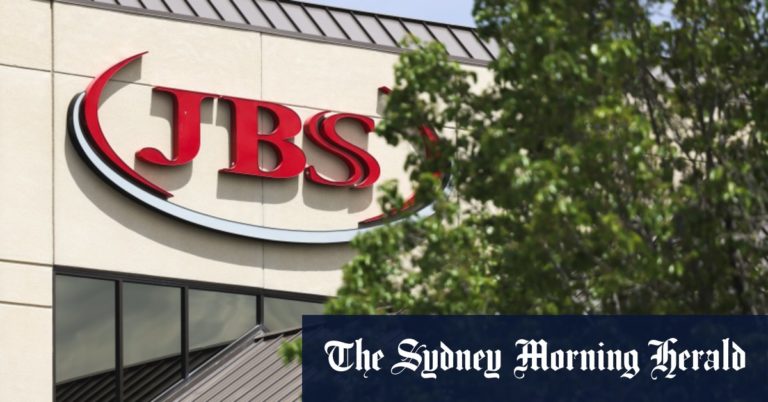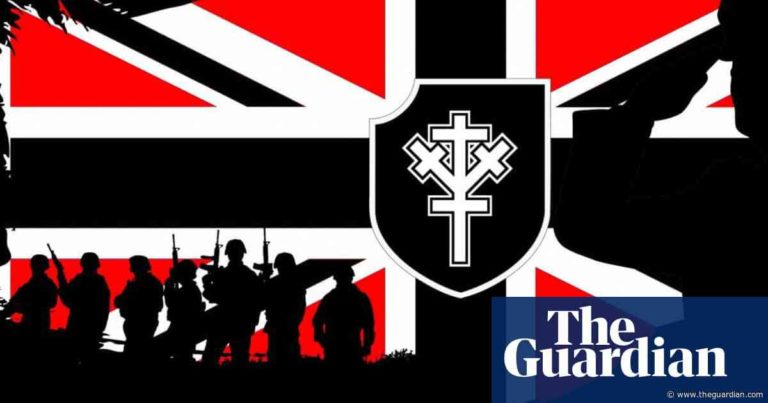OPEC Plus agrees to add production as oil prices climb.
Daily Business Briefing
Updated
June 2, 2021, 11:49 a.m. ET
June 2, 2021, 11:49 a.m. ET
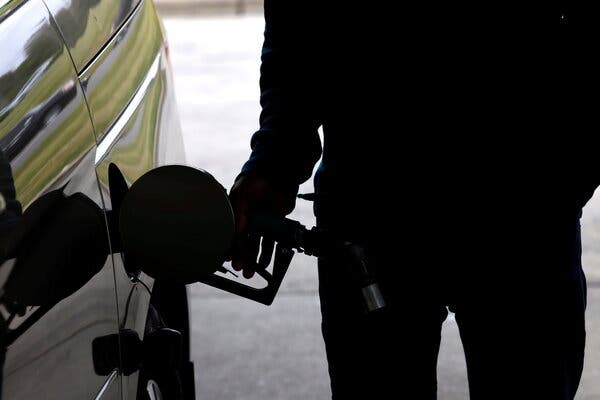
It did not take long. With oil futures rising to levels not seen since 2018, officials from the Organization of the Petroleum Exporting Countries and allied producers like Russia met on Tuesday and decided to stick with a plan to gradually ease production curbs agreed to in April.
OPEC meetings sometimes drag on for days, but Tuesday’s gathering required less than half an hour, Prince Abdulaziz bin Salman, the Saudi oil minister, said during a news conference. The rising price of oil probably didn’t hurt.
The group, known as OPEC Plus, is still adjusting to a market that collapsed a year ago when the pandemic took hold of the global economy, forcing a huge cutback in petroleum output. Under the plan the group agreed to in April and confirmed on Tuesday, the oil states will add 350,000 barrels per day in June and 441,000 barrels per day in July.
Saudi Arabia will also continue to unwind the one million barrels a day in voluntary cuts it announced this year. The Saudis plan to produce 350,000 barrels a day in June and 400,000 barrels a day more in July on top of the other states’ expansions.
Analysts say that even with these modest additions in production, the oil market is likely to be tight as increased economic activity leads to more petroleum consumption, burning off the glut that built up in the early months of the pandemic. “Demand growth is outpacing supply gains,” even with the OPEC Plus increases, said Ann-Louise Hittle, an analyst at Wood Mackenzie, a market research firm.
Oil prices rose on Tuesday. Brent crude, the international benchmark, settled above $70 a barrel, while the U.S. benchmark, West Texas Intermediate, gained about 3.5 percent, to more than $68.50 a barrel. Both prices were the highest since October 2018.
OPEC ministers are watching indirect talks between Iran, a member of the cartel, and the United States that could lead to an easing of sanctions and a surge in Iranian crude onto the world market. OPEC figures that the outcome of the talks is still unclear and that a major increase in Iranian oil output, if it comes, is months away.
Prince Abdulaziz said that the issue of Iran had not been discussed during the meeting but that OPEC Plus would continue its recent practice of holding monthly meetings to decide on adjustments in output as necessary.
“We know the situation prevailing today allows us to proceed with what we are planning in July,” he said.
The new media company that would combine WarnerMedia and Discovery has a name: Warner Bros. Discovery.
David Zaslav, the executive who will run the combined companies if the merger is approved by regulators, announced the name at a town-hall-style meeting on Tuesday with WarnerMedia employees in Burbank, Calif.
At the event, Mr. Zaslav said the Warner Bros. name would go front and center because the studio — founded in the silent-film era by the immigrant brothers Harry, Albert, Sam and Jack Warner — has produced “the greatest content over the last 98 years.”
“At the end of the film,” he said, “you see the word ‘Warner Bros.’ It’s imprinted in all of us.”
In his first opportunity to introduce himself to his prospective employees, Mr. Zaslav, who has been in charge of Discovery since 2007, spoke with the WarnerMedia chief executive Jason Kilar from the stage of the Steven J. Ross Theater on the Warner Bros. lot.
The two executives did not mention the future of Mr. Kilar, who has retained a legal team to negotiate his exit from the company. Mr. Kilar told WarnerMedia employees at a virtual event last week that he would stay in his role into next year. The event on Tuesday came two weeks after AT&T announced it would spin off its WarnerMedia division — the home of HBO, CNN and the Warner Bros. TV and movie studios — and combine it with Discovery Inc.
Mr. Zaslav talked about growing up in New York and described how he had broken into the media business. He also spoke glowingly about CNN and mentioned several HBO shows he said he had watched recently, including the crime series du jour “Mare of Easttown,” the 2001 World War II mini-series “Band of Brothers” and the 2000s show set in the entertainment world, “Entourage.”
Mr. Zaslav noted that he would be able to greet several WarnerMedia employees. But his conversations with them — and with Mr. Kilar — will have to be limited. Until the merger wins approval, a process expected to take about a year, Discovery and WarnerMedia will treat each other as competitors.
A temporary logo for Warner Bros. Discovery was unveiled at the meeting, one that included a new slogan: “The stuff that dreams are made of.”
It is a variation on a line from the Shakespeare play “The Tempest” that appeared at the end of “The Maltese Falcon,” the 1941 Warner Bros. film directed by John Huston and starring Humphrey Bogart as the private detective Sam Spade.
“It’s one of my favorite movies,” Mr. Zaslav said.
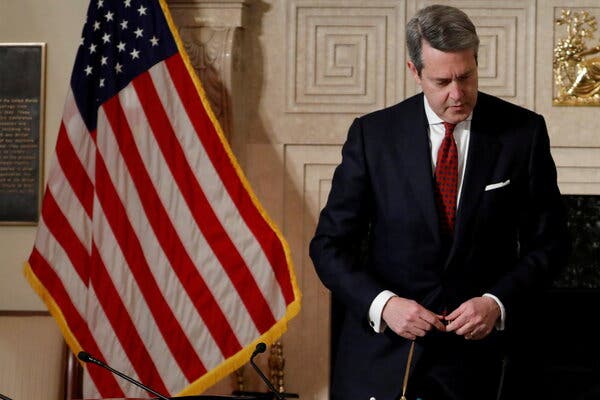
The Federal Reserve’s Board of Governors is expected to have several openings over the coming year, allowing the Biden administration a chance to partly remake a body largely appointed by former President Trump, potentially by increasing diversity and including candidates who are more aligned with its economic priorities.
But there might be one position fewer to fill than many Democrats had been hoping for. Randal K. Quarles, the Fed’s vice chair for supervision, suggested during an event on Tuesday that he might stay at the central bank once his leadership term ends.
Mr. Quarles’s term as vice chair runs through mid-October, and his term as head of the global Financial Stability Board wraps up in December. Once those leadership roles end, he could stay at the Fed as one of its seven governors until 2032.
“I’ll serve out my full F.S.B. term,” Mr. Quarles said during a Politico event on Tuesday. “There’s a tradition in our family that people serve out their full terms on the Federal Reserve Board of Governors, even if they’re no longer the chair or the vice chair.”
He said he “hasn’t decided that yet” when asked if that meant he would serve through 2032, just that there’s familial precedent for it.
Mr. Quarles is married to a relative of Marriner Eccles, who was a long-serving Fed chair before the Truman administration declined to reappoint him in 1948. Mr. Eccles chose to stay on as governor until he resigned in mid-1951, and ended up playing an important role in striking the agreement that secured the Fed’s independence from elected government. The Fed has been free ever since to set policy to achieve macroeconomic goals — stable inflation and high employment — rather than partisan ones.
As the Fed’s first official vice chair for banking supervision, Mr. Quarles has helped loosen safeguards put in place following the global financial crisis.
His stance on regulation makes it highly unlikely that the Biden administration would reappoint Mr. Quarles to his leadership role, because his views are at odds with those of the White House. If he were to stay on as a governor, though, it could ramp up pressure on the administration to find a powerful and knowledgeable replacement for Mr. Quarles, one who could balance his influence on regulatory measures.
Richard H. Clarida, the Fed’s monetary policy vice chair, will see his term as governor expire in early 2022. Jerome H. Powell, the Fed’s chair, will see his leadership role end early next year, though his governor role lasts into 2028. Mr. Powell became a governor during the Obama years but elevated to his current position during the Trump administration. There is one open spot on the Fed board already.
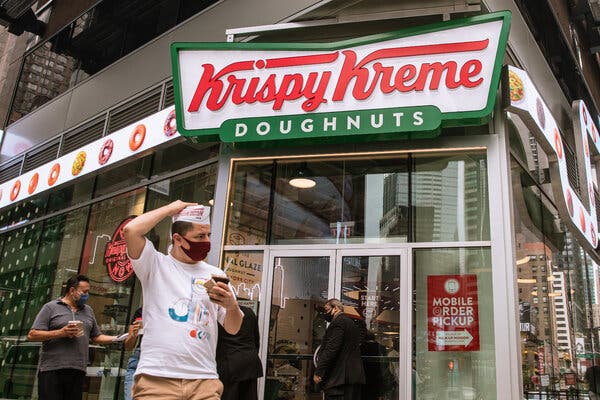
Krispy Kreme, the doughnut giant owned by the European investment firm JAB Holding, is planning to sell stock to the public.
The company revealed its financials for the first time on Tuesday as it prepares for a public listing in the United States. The company’s sales grew 17 percent to $1.1 billion its last fiscal year, up from $959 million (not $959,000, as previously written here) the year before. Losses, though, nearly doubled, to $60 million from $34 million as the company doubled down on efforts to transform itself. That includes the $20 million it spent on consulting and advisory fees, personnel transition costs, buying out its franchisees and other initiatives.
JAB acquired Krispy Kreme for roughly $1.35 billion in 2016, adding the doughnut seller to a portfolio of consumer brands that now includes the sandwich shop Panera and the coffee chain JDE Peets.
The firm has since taken JDE Peets public and is laying the groundwork to do the same with Panera. The I.P.O. market has been wide open for consumer brands like Oatly, the dairy-free milk producer, and Honest Company, the online consumer products retailer. Digital brands like Warby Parker, the eyeglass store, and AllBirds, the Silicon Valley shoe favorite, are also considering offerings.
But unlike many of those brands, Krispy Kreme is no start-up. The 83-year old company first went public in 2000 before its sale to JAB. It must contend with new health trends, as well as a dining backdrop that has transformed considerably over the past year, as restaurant giants poured money into technology to adapt to the remote needs of customers. Among the leaders was Dunkin’ Brands, which was acquired by Inspire Brands, the parent of Arby’s, for $11 billion last year.
Krispy Kreme says it is not a restaurant but “an affordable indulgence.” The brand said in its I.P.O. prospectus its doughnuts are “world-renowned for their freshness, taste and quality,” and it highlighted its ability to create “major media-driven events,” like its doughnut giveaway to promote coronavirus vaccinations.
Shares will trade on the Nasdaq stock exchange under the symbol DNUT.
Stocks were mostly unchanged on Tuesday as new data showed evidence of a strengthening global economic recovery but included signs that manufacturers are struggling to keep up with demand, which could increase inflationary pressures.
The S&P 500 and the Nasdaq composite ticked down less than 0.1 percent.
Commodities and bond yields saw gains, though they ended the afternoon well below their highs of the day.
The yield on 10-year Treasury notes was at 1.61 percent, up two basis points but down from 1.64 percent earlier in the day. West Texas Intermediate, the U.S. crude benchmark, gained 2.1 percent to $67.72 a barrel, as the Organization of the Petroleum Exporting Countries and its allied producers including Russia decided on Tuesday to continue gradually increasing production quotas.
Shares of AMC Entertainment, the world’s largest movie theater chain, jumped 23 percent. The company’s shares were caught up in a trading frenzy earlier this year, when small investors briefly pumped up so-called meme stocks. The volatility has continued, and on Tuesday, AMC shares closed at prices not seen since late 2016.
The sudden lack of child care systems at the height of the pandemic has been blamed for causing what many economists call the world’s first “she-cession” — when more women than men, particularly those with children, were either pushed out of their jobs or were forced to downsize their careers.
But a new study published in April by the National Bureau of Economic Research, which analyzed employment figures in 28 developed countries in North America and Europe, presents a more nuanced picture of the damage. The economic damage was indeed worse for women in almost every country analyzed: The number of women in the labor force, compared with men, fell in 18 of the 28 countries, reports The New York Times’s Alisha Haridasani Gupta.
And part of the disproportionate impact on women globally was, undoubtedly, related to the extent of school closures. Schools have been closed the longest in the United States and Canada, according to data from UNESCO, the U.N.’s education agency, and employment among women fared the worst in both those countries.
In France, schools were closed for a total of 11 weeks, and employment losses for women were among the lowest of the 28 countries analyzed, said Matthias Doepke, an author of the study and an economist at Northwestern University. However, France also ended up with higher coronavirus infection and death rates than other European countries.
But school closures alone don’t explain how a country like Germany, where schools were shut for 30 weeks, kept unemployment levels for women low, Mr. Doepke said, suggesting that other factors, like labor protections or the ability to work remotely, played equally significant roles in employment.
One critical difference between the United States and Germany (as well as several other countries in Europe) is the expansive furlough programs, in which workers remained employed and received subsidized paychecks while working reduced hours or none at all. Often, those paychecks were larger for parents.
And the study found that the single biggest indicator of job losses for American women in the last year was actually whether they could work from home in the first place. Among mothers of prekindergarten children who could not work remotely, their hours declined by almost 18 percentage points more than fathers’ work hours. But for mothers who could work remotely, that gap was two to three percentage points.

As the pandemic hampered factory operations and created chaos in global shipping, many economies around the world were bedeviled by shortages of a vast range of goods including electronics, lumber and clothing.
The shortages reflect the disruption of the pandemic combined with decades of companies limiting their inventories, The New York Times’s Peter S. Goodman and Niraj Chokshi report.
Over the last half-century, Toyota has captivated global business in industries far beyond autos. It pioneered so-called Just In Time manufacturing, in which parts are delivered to factories right as they are required, minimizing the need to stockpile them. Companies have embraced Just In Time to stay nimble, allowing them to adapt to changing market demands, while cutting costs.
But the tumultuous events of the past year have challenged the merits of paring inventories, while reinvigorating concerns that some industries have gone too far, leaving them vulnerable to disruption.
The most prominent manifestation of too much reliance on Just in Time is found in the very industry that invented it: Automakers have been crippled by a shortage of computer chips — vital car components produced mostly in Asia. Without enough chips on hand, auto factories from India to the United States to Brazil have been forced to halt assembly lines.
But the breadth and persistence of the shortages reveal the extent to which the Just in Time idea has come to dominate commercial life. This helps explain why Nike and other apparel brands struggle to stock retail outlets with their wares. It’s one of the reasons construction companies are having trouble purchasing paints and sealants. It was a principal contributor to the tragic shortages of personal protective equipment early in the pandemic, which left frontline medical workers without adequate gear.
Just In Time has amounted to no less than a revolution in the business world, but the shortages raise questions about whether some companies have been too aggressive in harvesting savings by cutting inventory, leaving them unprepared for whatever trouble inevitably emerges.
No pandemic was required to reveal the risks of overreliance on Just In Time combined with global supply chains. In fact, experts have warned about the consequences for decades.

Let’s say you’re thinking about becoming a digital nomad this summer, making the most of your company’s work-from-home policy as borders reopen before the bosses require you back in the office. The streets of Rome and the foothills of Iceland’s glaciers are appealing, but have you thought much about the logistics of keeping up with your job, or about the tax consequences?
As tempting as it all is, the reality can be complicated, experts say.
“The tax system globally right now is not prepared for what the work force is going through,” said David McKeegan, a co-founder of Greenback Tax Services, an accounting firm for U.S. expatriates. “I think at some point we’ll see a system where people are asked on the way in or out if they were working and countries will try and get some more tax revenue from this very mobile work force.”
Here is a look at how working remotely from abroad could affect Americans’ take-home pay, addressing questions such as:
-
Can I work from outside the United States for a few weeks or months without being double-taxed?
-
Am I on the hook for U.S. taxes no matter where I go?
-
Can I “forget” to mention my plans to my boss?

